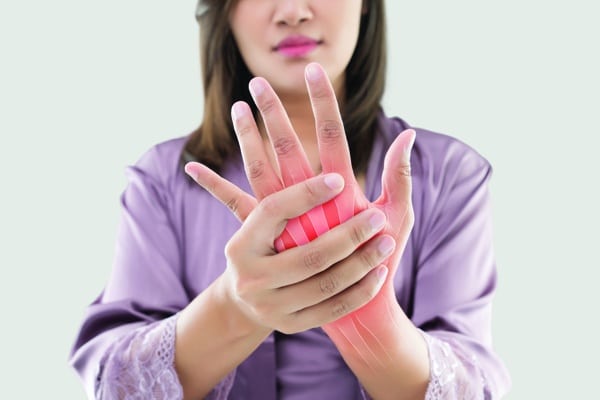Most people understand arthritis causes pain and inflammation in and around the joints, but they may not realize these symptoms can be caused by two distinct diseases.
Rheumatoid arthritis and osteoarthritis may share some symptoms, but they have entirely different causes, says Anmol Dhillon, MD, rheumatologist on the medical staff at Methodist Dallas Medical Center. One is caused by the “wear and tear” of the joints and their lining, while the other is an autoimmune issue, the result of an immune system gone haywire.
Knowing which disease is causing your symptoms is key.
“When we have an explanation for what’s causing your joint pain, we can come up with a treatment plan,” Dr. Dhillon says.
HOW DISEASES DIFFER
Osteoarthritis is the most common form of arthritis and tends to begin with an isolated joint. It occurs when repetitive motion wears down the cartilage, the connective tissue that pads the end of our bones.
“Osteoarthritis is characterized by the breakdown of cartilage and changes of the joints,” Dr. Dhillon explains. “There is a deterioration of the tendons and ligaments, and in some patients, there is some extent of inflammation of the joint’s lining.”
It’s an affliction that most commonly affects middle-aged adults or seniors.
Rheumatoid arthritis, on the other hand, is much rarer and can be found in any age group. It’s an autoimmune disease in which the immune system mistakes the body’s cells as foreign pathogens, leading it to attack healthy tissues and joints. Because immune cells travel through our blood vessels, it’s a disease that can cause all kinds of problems.
“Rheumatoid arthritis is not only a disease of the joints,” Dr. Dhillon says. “It can involve other parts of the body, like the eyes, skin, and lungs. It’s a systemic disease.”
Surprisingly, these complications can include dry eyes and mouth, increased inflammation and scarring in the lungs, and nodules throughout the body.
KNOW THE SYMPTOMS
With rheumatoid arthritis, the stiffness and swelling of the joints also tend to be more dramatic and obvious, Dr. Dhillon says. These patients may notice the change over weeks or months, along with other symptoms of fatigue, a general malaise, and a loss of appetite.
“Their joints may feel stiff in the morning, and it usually lasts about an hour or so,” she explains. Rheumatoid arthritis most commonly targets the joints in the hands, wrists, and feet, although it can also affect the knees and vertebrae in the neck.
By comparison, Dr. Dhillon says, osteoarthritis patients will see their joint aches worsen over a period of years, and much of it will be in the weight-bearing joints found in the hips, knees, and spine, as well as the hands and feet.
“They will also mention that they feel stiff or more achy in the morning, but usually, the stiffness lasts only a few minutes. Definitely less than an hour,” she says.
LIFESTYLE VS. GENETICS
There is a genetic component when considering risk factors, Dr. Dhillon says. Females are more likely to develop both types of arthritis, and family history could also play a role.
Those who suffer chronic inflammation have a higher risk of rheumatoid arthritis, while people with joint deformities may be more at risk of osteoarthritis.
But there are also certain habits and behaviors that can hurt us.
“We have found that people who are smokers, and especially those who already have a genetic predisposition towards it, are more likely to develop rheumatoid arthritis,” Dr. Dhillon explains. “As for osteoarthritis, older age, obesity, and repeated stress or injuries are major risk factors.”
Because extra weight can place added strain on the bones and joints, she recommends patients adopt a routine of low-impact exercises.
“I would say that for every 10 pounds of weight a patient loses, they can reduce their chance of developing knee osteoarthritis by up to 50%,” Dr. Dhillon says.
WHEN TO SEEK HELP
There is no cure for either type of arthritis, but there are ways to manage symptoms and send the diseases into remission. It could take a combination of exercise, medications, and physical or occupational therapy.
If a joint becomes particularly damaged or deformed, surgery may also be an option, Dr. Dhillon says. But surgery by itself is not helpful for treating rheumatoid arthritis because it’s an autoimmune disorder.
The best thing patients can do, she says, is to seek medical advice as soon as they notice something is wrong.
“As it gets worse, people slowly stop participating in activities that used to be enjoyable because of the pain,” Dr. Dhillon says. “They start avoiding those activities, which can lead to feelings of depression and isolation.”
But it doesn’t have to be that way, she says. You can still have a good quality of life with the right treatment plan, courtesy of your physician.
“If your body is saying, ‘I need help,’ listen to it and get medical attention.”





